Is ChatGPT Plagiarism Free? The Impact And Guide To Avoid
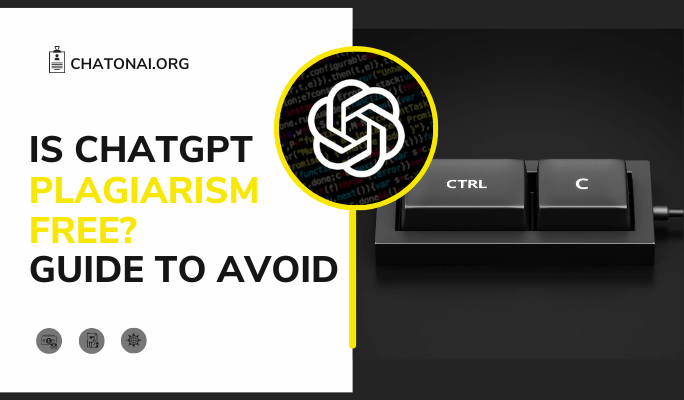
ChatGPT Plagiarism Thumbnail
In today's digital world, with the rising of AI systems like ChatGPT, many people are worried about plagiarism. They are wondering if search engines penalize AI-generated content. As a leader in AI, Google is actively working on this ChatGPT plagiarism issue.
Google doesn't punish content just because AI creates it. However, they want creators to provide high-quality and valuable information to users. If AI-generated content isn't up to par, ranking well in search results is tough.
To avoid problems, it's crucial to ensure AI-generated content is well-written, informative, and helpful to readers. Following Google's guidelines, ChatGPT content can give readers a great experience without any issues from the search engine giant. Now let's talk about ChatGPT plagiarism and learn how to avoid it to optimize your content.
Is ChatGPT Plagiarism Free?
ChatGPT is an artificial intelligence that can generate text based on what it has learned from data on the internet. Is using ChatGPT regarded as plagiarism? The answer is a bit more complex.
Plagiarism used to mean taking someone else's work and passing it off as your own. With ChatGPT, you're not copying someone's published work. Instead, you're using a tool to write content for you. So, in that sense, it's not plagiarism.
When you use ChatGPT's responses as your own, it can be a problem because it's not honest. Even though the AI doesn't copy from others, it doesn't show your own effort and what you know. Schools want you to be creative and think for yourself, which ChatGPT can't do. It's vital to do your own work and use your own ideas.
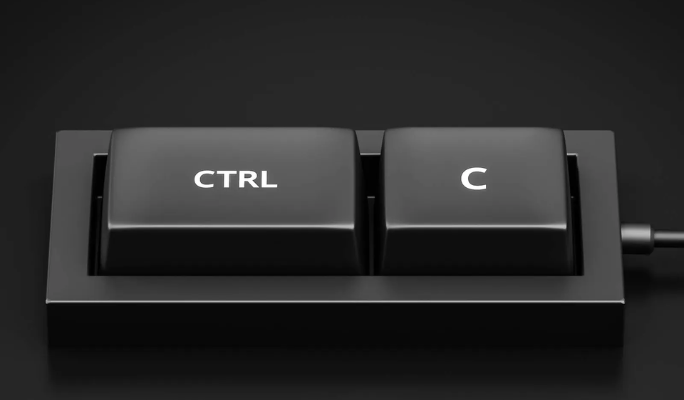
Is ChatGPT Plagiarism Free?
Moreover, using ChatGPT might not be ethical for everyone. It doesn't reflect your own wisdom, insight, or opinion on a topic. Many think relying solely on this AI system for school or work is dishonest or lazy.
To deal with ChatGPT plagiarism, OpenAI has taken steps to ensure it only creates original content.
They used a special method called reinforcement learning from human feedback. This means they asked people for feedback to teach the AI chatbot how to tell the difference between original and copied content. By doing this, ChatGPT became better at coming up with its own unique answers.
OpenAI has a system to keep us safe from bad or copyrighted stuff. They're always trying to make it better, but sometimes it might make mistakes and block things it shouldn't or let through things it should block.
This company is also working with other smart people and groups to solve problems with AI-generated content, like copying someone else's work. They want to make sure we use this technology in a good way and stop people from using it wrongly.
Rethink Plagiarism After ChatGPT
According to ChatGPT:
"Plagiarism is when someone uses someone else's ideas, words, or work without giving them proper credit. It involves presenting someone else's work as your own, whether it's a written assignment, a research paper, or any other form of creative or academic work."
From this definition, it can be hard to define plagiarism. What if the work is created by a computer program instead of a person? Experts who study academic integrity are talking about whether it's right to call it stealing if there's no person involved.
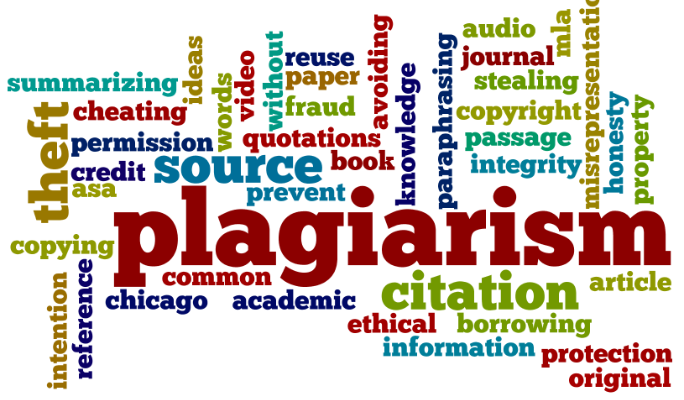
ChatGPT Plagiarism Definition
Some experts, like Emily Hipchen from Brown University, are unsure if we can tell someone is being stolen from when an algorithm creates the work.
Alice Dailey, who works at Villanova University, is also trying to figure out how to classify an algorithm that generates text.
Dailey thinks it's critical to recognize that digital tools, like language models that create text, can also be plagiarized. This means that using those tools without giving credit could be considered plagiarism.
Many experts believe that we've faced the same problems in the past. When students copy answers from websites without knowing who wrote them, it's similar to plagiarism with ChatGPT. We must understand and respect the original authors of the information we use. The question is: "Should we rethink plagiarism after ChatGPT?"
Some people think that the meaning of plagiarism will grow to include things made by computer programs. They say we should be careful and give credit when we use text from a program like ChatGPT. It's equal to copying and pasting from Wikipedia without saying where you got it.
But the most important thing is to be ethical and do your own work. Instead of worrying about getting caught, focus on doing things honestly and using your own ideas.
How To Avoid Plagiarism With ChatGPT?
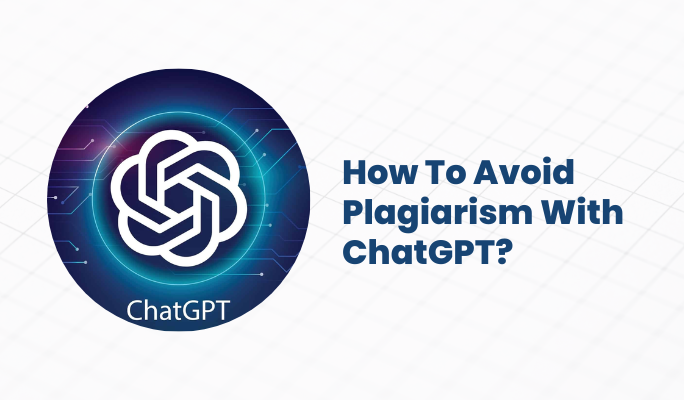
ChatGPT plagiarism How To Avoid
Regarding creating content, we must be careful when using language models like ChatGPT at school or work. Now let's explore steps to use ChatGPT correctly without plagiarizing.
Here is how you make the most of ChatGPT and still show off your own ideas and honesty:
Add Your Own Thoughts And Ideas
When using ChatGPT, you must understand that it's a helpful tool for coming up with ideas. It shows you different viewpoints, make you think creatively, and give you inspiration for your work. But remember, just copying and pasting what the AI says is not right and can be considered plagiarism.
To avoid this, use the output from ChatGPT as a basis and build upon it with your own thoughts and ideas. Take the generated content as the starting point. Let's think about how you may add your unique mindset, analysis, or personal experiences to make it your own.
When you add your own thoughts and ideas to your work, it makes it unique and shows that you understand the topic. This not only helps you avoid copying but also shows that you can think and write critically.
Remember, ChatGPT is just a tool that helps you be creative. It's up to you to make the content it provides better. Think of it as a starting point, and make sure your own voice and ideas stand out in your work.
Paraphrase And Rewrite
AI tends to produce content with low perplexity and burstiness. That means they are more likely to be detected by AI detection tools. To make your work stand out and be different from what ChatGPT generates, it's vital to rephrase and rewrite the text.
Paraphrasing means putting the content in your own words, changing how it's written while keeping the same meaning.
When you find helpful information or engaging parts from ChatGPT, don't copy them exactly. Instead, take the time to rephrase and express the ideas in your own unique way. This process makes your work original and shows you understand and interpret the content.
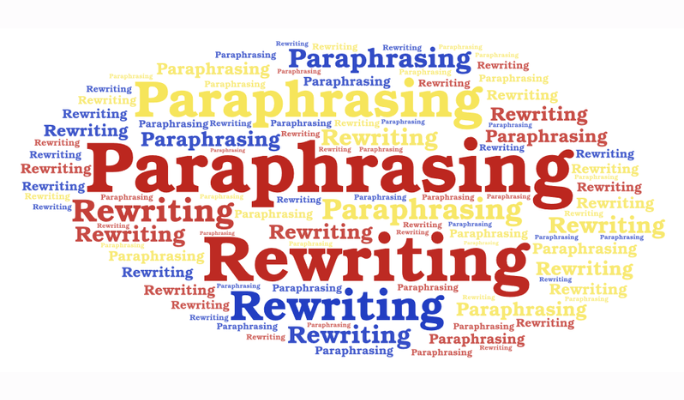
ChatGPT Plagiarism Paraphase
To paraphrase well, read the CahtGPT-generated text carefully and find its main ideas. Then, explain those ideas using your own words and writing style. Try to convey the same message without copying the exact words or structure from ChatGPT. The goal is to create something original that reflects who you are and shows you comprehend the topic.
Paraphrasing and rewriting the generated content ensure your work expresses your thoughts and ideas. Follow this step to create gripping and authentic content.
Let's prove your ability to communicate well while respecting the original information sources. The result is unique and different content from ChatGPT's original output.
By practicing this approach when you write, you can maintain the integrity of your work. That also shows that you're dedicated to producing original content.
Give ChatGPT Proper Credit
When you use exact or word-for-word content created by ChatGPT in your tasks, it's essential to give credit to the source. Like any other reference or citation, acknowledge ChatGPT as the source. You must show that you have academic integrity and respect the tool that assisted in creating the content.
To give proper credit to ChatGPT, include a citation in your work's reference or bibliography section. You can cite ChatGPT as the source and provide relevant details.
For example, provide the tool's name and the organization (OpenAI) behind it based on your citation style. Adding any other necessary information is up to you.
For example, in the reference section, include an entry like this:
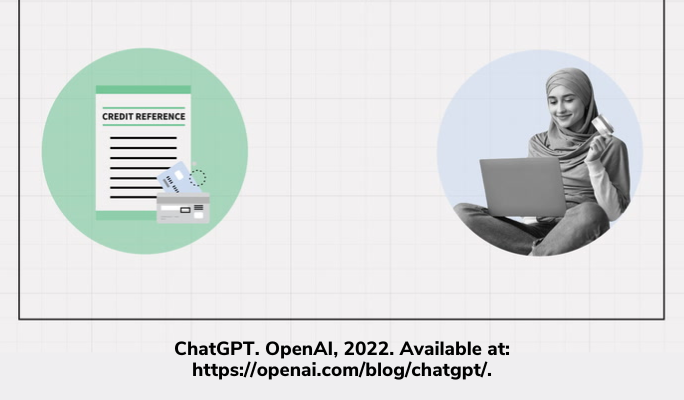
ChatGPT Plagiarism Give Credit
ChatGPT. OpenAI, [year]. Available at: [URL or platform information if applicable].
By including this citation, you acknowledge ChatGPT's contribution to your work. That's how you provide transparency to readers or evaluators about the assistance you got while creating the content.
Remember that when you use exact content or ideas from ChatGPT or if it greatly influenced your work, even if you said it in your own words, you should give credit. It's a good idea to include a note or citation to acknowledge that ChatGPT helped you with your thinking.
By following proper citation practices, you show respect for intellectual property. This step enhances the transparency of your work and upholds academic honesty. Consult your school's guidelines or publication for precise citation formats and requirements.
Use A Plagiarism Checker
Once you have finished the steps mentioned earlier, you should use a plagiarism checker. It helps make sure your work is original and honest, especially when using ChatGPT to assist you. Checking your work before submitting it helps you find and fix any issues. This way, you can be sure that your work meets the requirements for being original.
The ChatGPT Plagiarism Score measures how much of a text is created by AI, like ChatGPT. It uses special AI detectors to look for clues showing whether AI or a human made the text.
The detectors check factors like how confusing the text is and whether it has mistakes or matches other sources. If the Plagiarism Score is high, the text seems made by AI and is not original. In contrast, if the Plagiarism Score is low, it means the text is more likely written by a person and is unique.
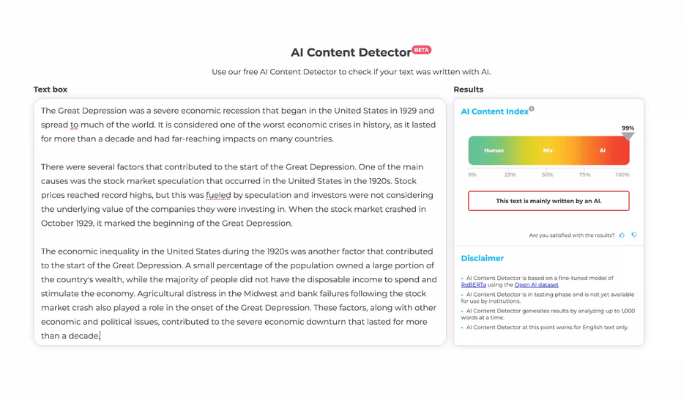
ChatGPT Plagiarism Checker
This score is helpful for checking if academic or professional texts, like essays or reports, are original and honest. It can also help find out if someone is cheating by using ChatGPT or other AI tools to copy information.
Even if you've followed the tips about adding your own ideas, rewriting, and giving credit to ChatGPT, it's still a must to use a plagiarism checker. It will prove your work has no unintended similarities to other sources. Here are some great AI plagiarism checkers you should try:
- Copyleaks: This checker helps you find plagiarism in over 100 languages. It can even detect content created by AI, like ChatGPT4, and check for text plagiarism in images.
- Winston AI: This premium AI content detector is known for its high accuracy. It can identify text created by ChatGPT, texts that mix AI and human writing, and entirely human texts. The best thing is it can even detect text changes by paraphrasing tools.
- Originality.AI: Another plagiarism detector with a high accuracy rate. Try it to detect the use of paraphrasing tools in human writing. It also has a grammar checker and a partnership with Turnitin.
The checkers will compare your work with an extensive database of published works. They are academic papers, sites, and other sources to see if any parts look similar. If the checker finds any issues, closely examine those parts. Ensure you've cited your sources correctly or made any needed changes.
However, when technology is growing more and more, the Plagiarism Score may not always be perfectly precise. Some AI models can be made to seem more like human writing and avoid detection. Use our own judgment and other proof to check if a text is reliable and where it comes from.
Final Thoughts
ChatGPT is a helpful tool for coming up with ideas and content. But it's crucial to use it responsibly to keep things fair and avoid copying. Knowing what ChatGPT plagiarism means is key to ensuring your work is real and original.
Even though ChatGPT is helpful, it's up to you to shape the content it gives you and make sure it's real. By learning to avoid copying, using your own words, giving credit, and checking for plagiarism, you can make the most out of ChatGPT while still being original and authentic
